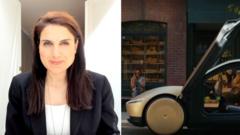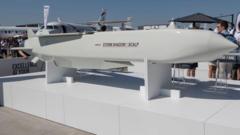
Elon Musk Unveils Tesla’s Robotaxi and Optimus Robots: A Glimpse into the Future of Autonomous Technology
At a recent Tesla event, Elon Musk introduced the company’s highly anticipated robotaxi, signaling a potentially transformative moment in autonomous vehicle technology. The unveiling promises a new era of transportation, with Musk confidently projecting the vehicle’s market entry as early as 2027.
The robotaxi represents Tesla’s ambitious vision for self-driving technology, relying primarily on camera-based systems for navigation and safety. However, this approach has raised significant concerns among technology experts and safety analysts. BBC Tech Correspondent Lily Jamali highlighted potential vulnerabilities in the camera-dependent autonomous driving system, suggesting that the technology might not be as foolproof as Musk claims.
Alongside the robotaxi, Musk also showcased the “Optimus” robots, another groundbreaking technological concept designed to revolutionize human labor. These humanoid robots are positioned as potential solutions for mundane and repetitive tasks, with Musk asserting they could dramatically free up human time and transform workplace dynamics.
The robotaxi concept represents more than just a new vehicle; it’s a bold reimagining of personal transportation. By removing human drivers, Tesla aims to create a safer, more efficient transportation ecosystem. The proposed vehicle would operate as a self-driving taxi service, potentially disrupting traditional transportation models and ride-sharing platforms.
Musk’s presentation emphasized the technological sophistication of both the robotaxi and Optimus robots. He portrayed them as not just technological innovations, but as potential solutions to broader societal challenges like labor shortages and transportation inefficiencies.
However, the unveiling also sparked significant debate within the tech community. Critics argue that camera-only autonomous driving systems might lack the comprehensive sensing capabilities of systems using multiple sensor types, such as LiDAR and radar. Safety remains a paramount concern, with questions about the robots’ ability to handle complex, unpredictable real-world scenarios.
The Optimus robots further underscore Tesla’s ambition to expand beyond automotive technology. By developing humanoid robots capable of performing various tasks, Musk is positioning the company as a potential leader in robotics and artificial intelligence.
While the 2027 timeline is ambitious, it reflects Musk’s characteristic optimism and willingness to push technological boundaries. The success of these technologies will depend on overcoming significant technical, regulatory, and public perception challenges.
As the automotive and robotics industries watch closely, Musk’s latest unveiling represents a potentially pivotal moment in technological innovation. Whether these robotaxis and Optimus robots will revolutionize transportation and labor remains to be seen, but they undoubtedly signal an exciting and transformative direction for technology.








